15 Types of Termites to Identify & Fight to Preserve Your Wood
Author: Omar Alonso | Editor: Omar Alonso
Review & Research: Jen Worst & Chris Miller
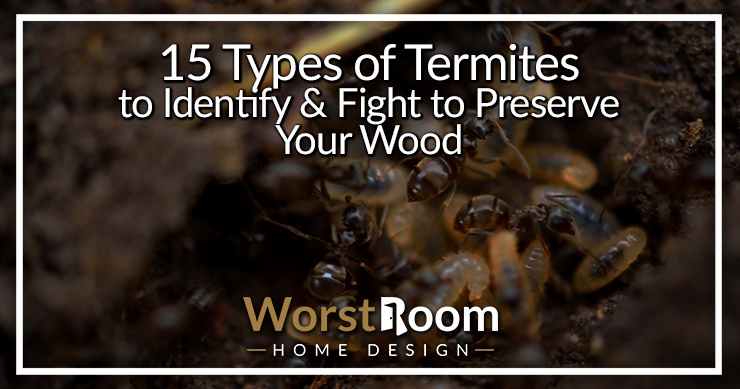
Termites need no introduction no matter which part of the world you live in. Now, it so happens that various types of termites can be quite different and large in number.
Some have names that we can't even pronounce, let alone identify. However, some termites never cease to grab our attention with their presence and the obvious harm they bring in.
So, everyone needs to learn, recognize and know these insects to protect themselves from impending danger. Hopefully, you will have built an arsenal of knowledge against these pests by the end of his article.
This article features the different species of termites so that you can identify and take necessary preventative action. Without further ado, let's dive into the details.
15 Types of Termites
Termites cause all kinds of damage, harming around 600,000 homes in the USA every year, causing upwards to $2 billion dollars in home damages annually, on average with each affected homeowner spending $3,000 in repairs. Residents spend up to $5 billion in prevention.
Let's get to know about various kinds of termites here and help you make sure you aren't dealing with wood mites. We'll cover the main categories and mention the sub types of termites within those. A few sub-types deserve their own mention as well.
Subterranean Termites
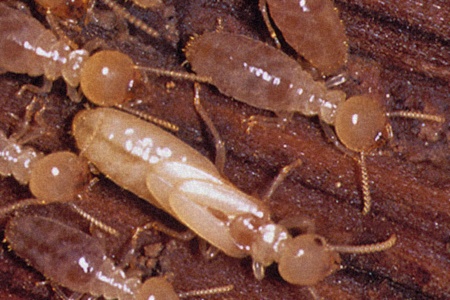
Sub-Types Include:
- Arid-Land Subterranean
- Dark Southeastern Subterranean
- Desert Subterranean
- Eastern Subterranean
- Formosan Termites
- Western Subterranean
The subterranean termites can be very sleek bugs. These termites are popular for building straightforward routes to their food from their storage. Even though they are only around 0.13 inches, it doesn't stop them from wreaking havoc when the time comes.
These termite types tend to protect themselves from the air. Hence, you'll mostly find them building large colonies underground.
Remember that most termites, in general, are fond of moisture. The subterranean termites that remain outdoors are fans of the moisture that allocates in the base of plants.
Their color can range from anything from a creamy white to darkish shades of brown. However, it's quite rare that they'll appear in front of you, given that you remain busy with your daily chores.
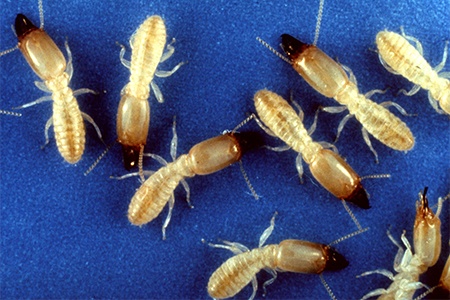
These kinds of termites tend to make their trails underground. So, if you find mud up-heaves around your home, you know what's up.
Another way to determine if these bugs have entered your home is if you find signs of entry. Signs of entry include small wings near the opening or the bug itself.
If you do find this to be true, then enter your house and see whether you find any of the wood in your house to be soft or not. If woods that tend to be hard turn out to be soft, then you must take immediate action.
Mature colonies don't form in places where there is regular cleaning. So if your property remains unclean for longer periods, then it's prone to get infested by these types of termites.
Remember that the biggest threat of subterranean termites is that they work in stealth mode and grow very fast. In other words, they can push you significantly towards home and financial loss even before you get a hint.
The go-to method to prevent termite infestation is to get rid of clogged water and moisture in and out of the house. Keep away from wet wood. And lastly, conduct annual pest control.
Formosan Termites
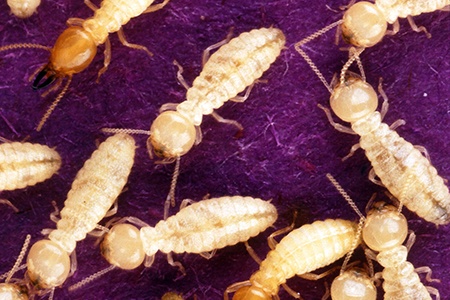
Formosan termite types tend to have a very organized colony. So, various roles are assigned to the termites. For example – some of them are reproductive, others are soldiers, and there are gatherers as well.
These varieties of termites can look somewhat similar to subterranean termites with certain dissimilarities. They are quite narrow with six legs.
Even though these bad boys cannot be found all over the world, they are pretty common in regions such as Hawaii, California, and Alabama.
Wondering if you're place is infested by these or not? The first step is to check the lights in your house. Lights attract termites like so many other insects out there.
If there is infestation around you, then the termites are bound to end up close to the light sources. You'll either find discarded fans or termite bodies. If you don't encounter any of these, you're 'probably' safe.
The Formosan termite species loves wood. So, another way to check for infestation is to look for hollow or eaten away wood. If you suspect infestation from the mentioned signs, then it's time to schedule a pest control.
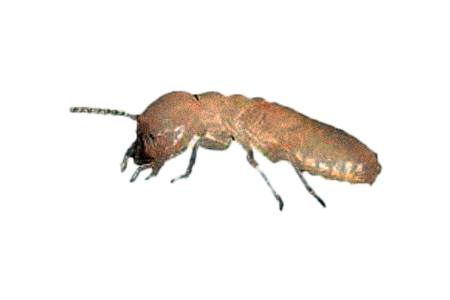
If you have problems with termites in your fences, rather than dealing with all that maintenance, you're better off looking into fence alternatives rather than constantly maintaining your wattle fence, as an example.
The best fight against these different kinds of termites comes from prevention. And the first step towards that will be to check for water drainage beside your home.
If you happen to come across one, then see if it leads to wooden planks or fences or not. Most often than not, the infestation begins at wet wood. So, you know what to look for.
Lastly, you must remember that Formosan termites are aggressive in nature. They are not limited to the ground like other termites.
Winged termites will scale up to large buildings and infest many stories above. This is both a reason of concern and carefulness. We must be aware.
Drywood Termites
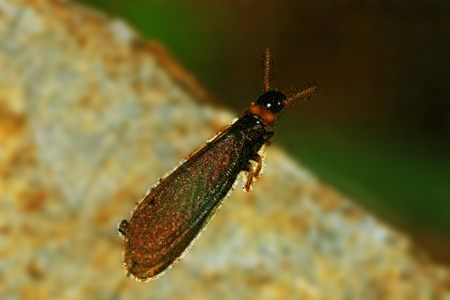
Sub-Types Include:
- Desert Drywood
- Southeastern Drywood
- Western Drywood
If you've been to the countryside, then you might've noticed micro-balls or dirt surrounding very small holes. These particles are known as fecal pellets – the awakening call of dry wood termites.
These termites have a narrow body with several winged versions. Not only do they dig underground, but they fly to infest higher lands also. So, they automatically deserve a level of concern if you want to deal with them.
Again, the colony doesn't consist of a separate worker class. So, the number of Swarmers and Reproducers is naturally high. In other words, they are more agile in expanding their colony than other termites.
Unlike other termites, these aren't dark in color. They belong to a very creamier color shade and are easily recognizable.
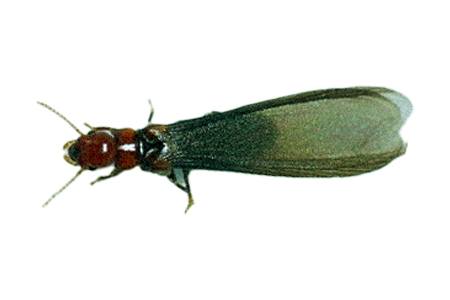
Want in on a fun fact about them? These types of termites aren't driven by moisture, so you'll generally find them swarming on a warm sunny summer day.
Dry wood such as firewood and scrap wood is easy habitat for these species. And this is exactly why they are known as dry wood termites. Watch out, because they can get into your wood stack and even the handles of your fire pit tools.
When we move around infested furniture or pieces of wood without being cautious, the colony multiplies. So, the first step to prevention is to be cautious of all sorts of wood that looks fishy.
The bugs can be prevented by making sure that the wood that you discard as scrap is at least 30 feet away from your property.
If you have large trees in your land, then ensure the cleaning of large branches that fall to the ground. And finally, refrain from throwing away pieces of scrap here and there on your property. Pay attention to staying clean and hygienic — it's worth it.
Dampwood Termites
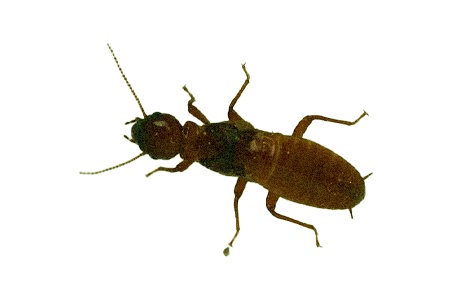
Sub-Types Include:
- Desert Dampwood
- Florida Dampwood
- Nevada Dampwood
- Pacific Dampwood
This category of termites is the only one not to be dependent on soil. This doubles their significance and risk meter among all other termites on our list.
Imagine a termite that doesn't need soil to build a colony. In other words, a group can be growing inside the planks of your wooden types of bed frames, and you wouldn't even realize.
The explanation is pretty straightforward – if they find dampened timber, they will start up a colony. Infestation begins on both wet wooden pieces or even live trees. Since they are fast eaters, they can even damage several square meters of cropland as well.
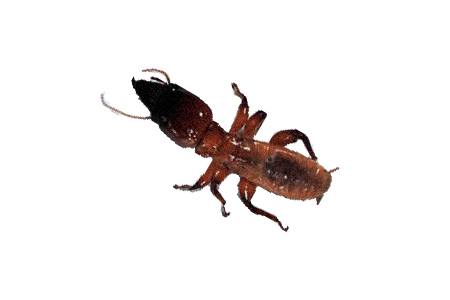
What's worse is that the colony can survive within a single plank of wood if it's wet enough. These termites happen to be easily noticeable due to their reddish-brown color and strong caste system.
So, if you notice fecal pellets and shredded wings with signs of red termites, you'll know who's the culprit.
Note that the easiest way to get rid of such infestation is to trash wet planks after wrapping and sealing them in polythene. Usually, burning or discarding affected pieces of wood works as a cure.
But if you suspect a massive attack, then don't hesitate to call in pest control. After all, it's better to be safe than sorry later.
Conehead Termites
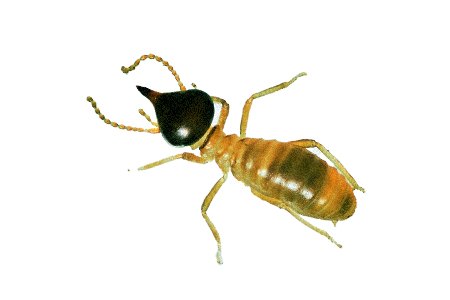
The termites that belong to this class have a notoriety for their aggressive soldiers. It so happens that the heads of the soldier class are conical on the top end.
And that eventually led to the naming of the insect. Now, as you've probably noticed, each sort of termite has a certain favorite. And the favorite dish to conehead termites is cellulose compounds.
In other words, these types of termites are literally buggers for timber and trees. A lot of people are used to calling them 'tree termites' as well.
The coneheads don't care whether the timber is soft, hard, wet, or dry. They will dig in as long as it contains cellulose. Which puts your garden, house, tool shed, types of siding, and even most types of wood fences at the risk of infestation.
Desert Termites
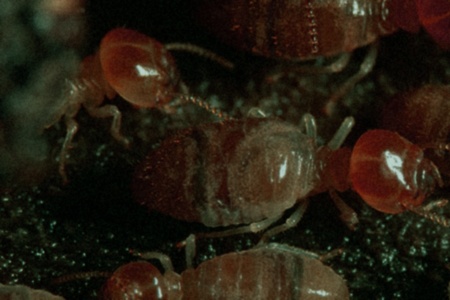
As the name suggests, these termite varieties originated from the deserts. Due to their place of origin, they tend to build their colonies in sandy areas.
If the land isn't sandy enough, these termites will go to the extent of artificially making the land porous — all this effort to build a home that's comfortable enough to live in.
Sunny deserts are devoid of moisture. The bugs will build granules of soil and saliva to keep themselves close to moisture.
The prevention and solution to a desert termite infestation are the same as that of dry wood termites. Therefore, we won't be elaborating on it to avoid repetition.
If you live in an apartment, then you don't need to worry about desert termite infestation. The only exception to this would be if you had a garden inside your home.
Types of Termites in Every Environment
Prevention is better than cure. Invest a little money to keep your assets safe from this hazard as different termites and their presence will affect your daily lives differently.
The purpose of the article is to walk you through the prevention tactics so that you remain safe from the harm of different types of termites. So, the next time you encounter one of these pests, you won't be panicking like before. Stay clean, stay safe.



